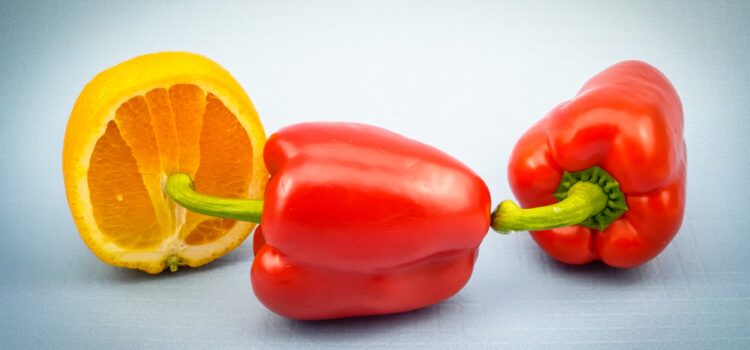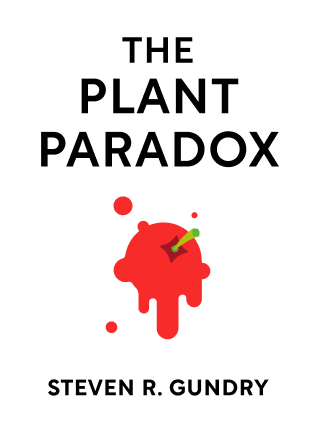

This article is an excerpt from the Shortform summary of "The Plant Paradox" by Steven R. Gundry. Shortform has the world's best summaries of books you should be reading.
Like this article? Sign up for a free trial here .
What is on the Plant Paradox food list? How does the Plant Paradox food list change with each phase?
Read on to see what you can and can’t eat in each phase of the Plant Paradox Program with this comprehensive look at the Plant Paradox food list.
The Plant Paradox Food List: Phase 1
During the cleanse, these are the foods that are off-limits:
- Canola
- Corn
- Dairy
- Eggs
- Farm animal meat (e.g. beef)
- Fruit
- Grains or pseudo-grains
- Nightshade plants
- Roots (e.g. beets, carrots, ginger)
- Seeds
- Soy
- Sugar
- Tubers (e.g. potatoes, jicama, and yams)
Now let’s look at what you can eat on the Plant Paradox food list.
Vegetables should be organic, in season, and grown locally and sustainably, if possible. They can be fresh or frozen, and you can have as much as you want, either cooked or raw.
- Artichokes
- Asparagus
- Cabbages (e.g. bok choy, broccoli, Brussels sprouts, cauliflower, kale, and mustard greens)
- Celery
- Greens (e.g. endive, lettuce, spinach, Swiss chard, and watercress)
- Fennel
- Fresh herbs (e.g. mint, parsley, basil, and cilantro)
- Garlic
- Ocean vegetables (e.g. kelp, seaweed, and nori)
- Onions (including leeks and chives)
- Radishes
(Shortform note: Some vegetables approved for the cleanse—such as onions, garlic, and artichokes—are considered root vegetables, despite the fact that roots are on the off-limits list.)
You can eat no more than 8 ounces of protein a day in two 4-ounce portions.
- Hemp tofu
- Pastured chicken
- Tempeh without grains
- Wild-caught fish (e.g. salmon, shellfish, mollusks)
Fats and oils:
- Avocado oil
- Coconut oil
- Extra-virgin olive oil (cook at low heat, never high heat)
- Flaxseed oil (not heated)
- Hemp seed oil (not heated)
- MCT oil (also called liquid coconut oil)
- One whole Hass avocado per day
- Perilla oil
- Sesame seed oil
- Walnut oil
You can have one or two snacks a day. They may be lettuce boats filled with guacamole, half an avocado seasoned with lemon juice, or one-quarter cup of approved nuts, including walnuts, pistachios, and macadamia nuts.
For condiments and seasonings, avoid any pre-packaged salad dressings and sauces. Instead, opt for:
- Fresh lemon juice
- Herbs
- Mustard
- Spices
- Vinegar
The Plant Paradox Food List: Phase 2
The off-limits items—the Just Say “No” List—were foreign to the human diet until the Agricultural Revolution about 10,000 years ago; that’s not enough time for humans to develop resistance to the lectins contained in these foods. Remember what to avoid with the Plant Paradox food list.
- Whole grains
- Quinoa
- Beans
- Peanuts and Cashews
- Seeds
- Cow’s Milk
- Most meats
- Fruit
- Most oils and fats (long-chain saturated fats, mono- and polyunsaturated long-chain fats, and saturated fats)
- Sweeteners
The Plant Paradox list of food you’re allowed to eat during Phase 2:
- Vegetables
- Resistant Starches
- Fructooligosaccharides (FOS)
- Nuts
- Flours made without grains
- Dairy that is free of Casein A-1
- Fish, shellfish, and some poultry
- Fruits with resistant starches (and one avocado every day)
- Oils that block LPSs
Relaxing Restrictions in Phase 3
In Phase 3, this is the Plant Paradox list of food and other habits:
- Continue to eat all PPP-approved foods on the Plant Paradox food list
- Continue to avoid most off-limits foods (we’ll go into which ones you can reintroduce next)
- Increase your ketogenic fats, which are in MCT oil and coconut oil
- Eat less frequently and less food overall
- Reduce your animal protein intake to 2 ounces (or fewer) per day
- Try intermittent fasting
- Maintain your body’s internal clock by aiming to get an hour of daylight each day
- Avoid blue light in the evenings
One at a time, you can reintroduce the following foods and monitor your tolerance and any adverse reactions.
- Immature vegetables (with tiny or no seeds), such as zucchini, cucumbers, and Japanese eggplant
- Peeled, de-seeded nightshade and squash vegetables, such as peppers and heirloom tomatoes
- Pressure-cooked legumes
- Indian white basmati rice
Supplements to Consider
The fields where our food crops are being farmed and harvested have lost so much of their vitamins and minerals that no matter how much healthy food you’re eating, you can’t get all the nutrients you need from food alone. That’s where supplements come in to boost what is on the Plant Paradox list of food.
Supplements can’t fix an unhealthy diet, but when paired with healthy, balanced eating—specifically, the PPP—they close nutritional gaps and enhance the positive effects.
These are the most important supplements.
B vitamins: Vitamin B helps reduce levels of a particular amino acid that can damage your blood vessel lining. Your gut bacteria produce many B vitamins, so if your gut bacteria have been compromised by any of the disruptors we discussed earlier (e.g. antibiotics and NSAIDs), you’re probably deficient in methylcobalamin (vitamin B12’s active form) and methylfolate (folic acid’s active form); in addition, more than half the people in the world have a gene mutation that inhibits their production of these two vitamins.
Lectin blockers: Despite your best efforts, there may be times when you have to—or accidentally—eat lectins. In those cases, lectin-blocking supplements can help tame the negative effects. These include:
- D-mannose capsules
- Glucosamine tablets
- GundryMD Lectin Shield (created by the author)
- MSM tablets
Long-Chain Omega-3s: Omega-3s are fatty acids that are essential to memory and brain health. You get omega-3s from fish, but few people eat enough fish to get a sufficient amount, so supplement with fish oil that contains DHA.
Phytochemicals: The phytochemicals in leafy greens nourish your good microbes and ease your cravings for foods that feed bad microbes. Besides eating lots of leafy greens, you can increase your phytochemical intake with:
- Diindolylmethane (DIM)
- GundryMD Primal Plants (created by the author)
- Modified citrus pectin (powder or capsules)
- Spinach extract
Polyphenols: Polyphenols nourish your good microbes, dilate your blood vessels, and prevent an artery-clogging molecule from forming from certain animal proteins. You can get polyphenols from:
- Berberine
- Cinnamon
- Cocoa powder
- Grape seed extract
- Green tea extract
- Mulberry
- Pine tree bark extract
- Pomegranate
- Resveratrol (the polyphenol found in red wine)
- Vital Reds (created by the author)
Prebiotics: Prebiotics feed the probiotics—or microbes—in your holobiome, while starving the bad microbes. Recommended prebiotics include:
- Fructooligosaccharides (FOS)
- Galactooligosaccharides (GOS)
- GundryMD PrebioThrive (created by the author)
- Inulin powder, a type of FOS
- Psyllium husks
Sugar blockers: Even when you cut out sugar and fruits, you’ll still be consuming sugar in the form of carbs and other foods—there’s no avoiding sugar entirely. To help your body handle the sugar, take a combination of these supplements:
- Berberine
- Chromium
- Cinnamon bark extract
- Selenium
- Turmeric extract (with black pepper extract to help absorption)
- Zinc
- GundryMD Glucose Defense (created by the author; contains a blend of these.)
Vitamin D3: Vitamin D is vital to helping your body absorb calcium, but the standard American diet leaves most people vitamin D deficient.

———End of Preview———
Like what you just read? Read the rest of the world's best summary of Steven R. Gundry's "The Plant Paradox" at Shortform .
Here's what you'll find in our full The Plant Paradox summary :
- Why eating more vegetables isn't enough, and why some vegetables are toxic to your body
- The science behind lectins and how they tear apart your body, making you fat and sick
- The 6-week program to get your body back on healthy grack






